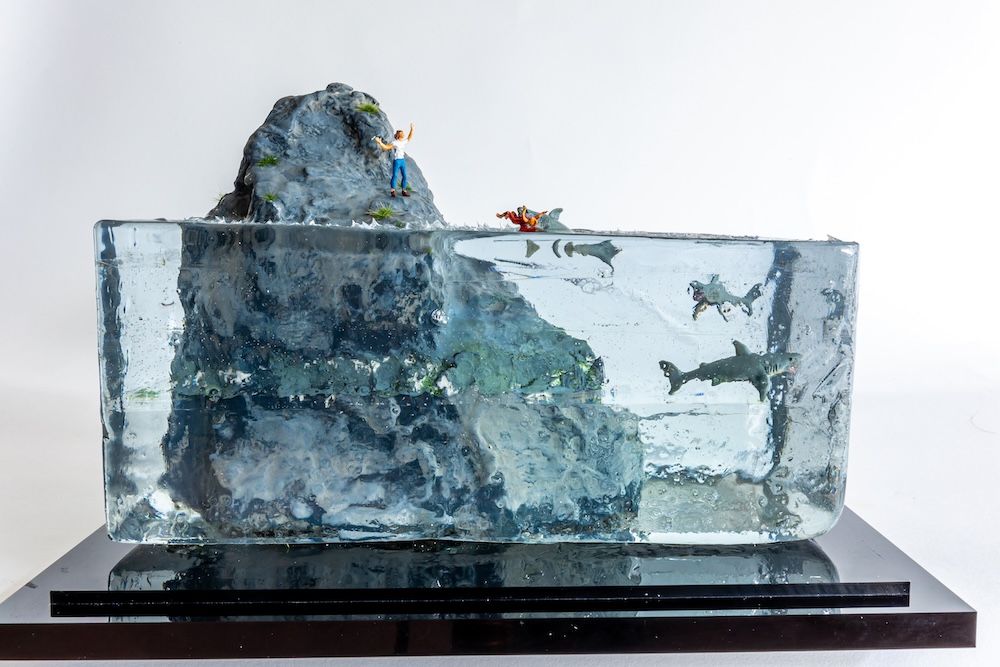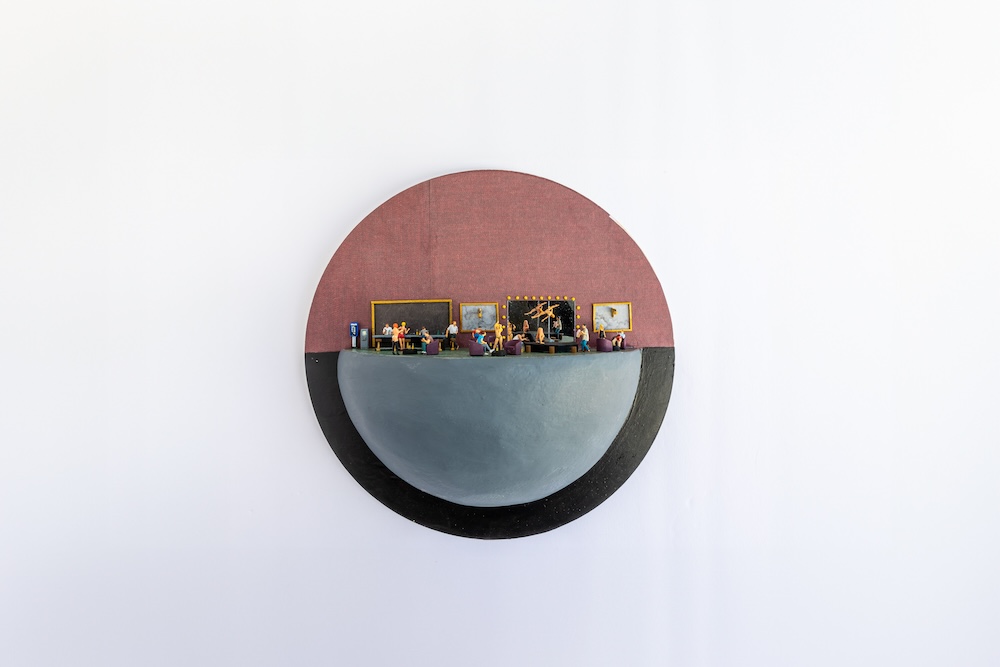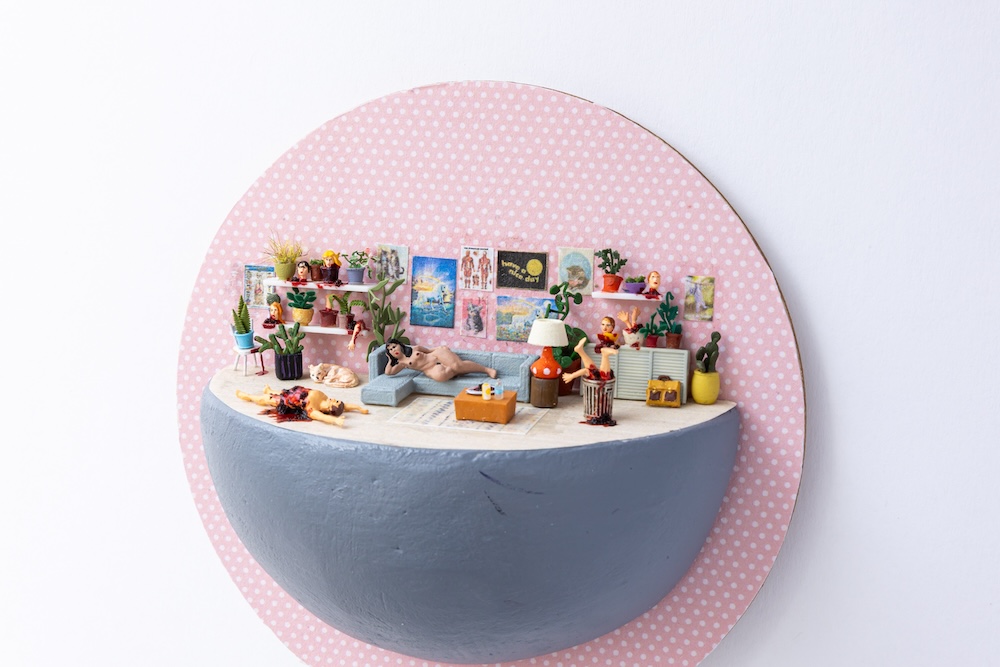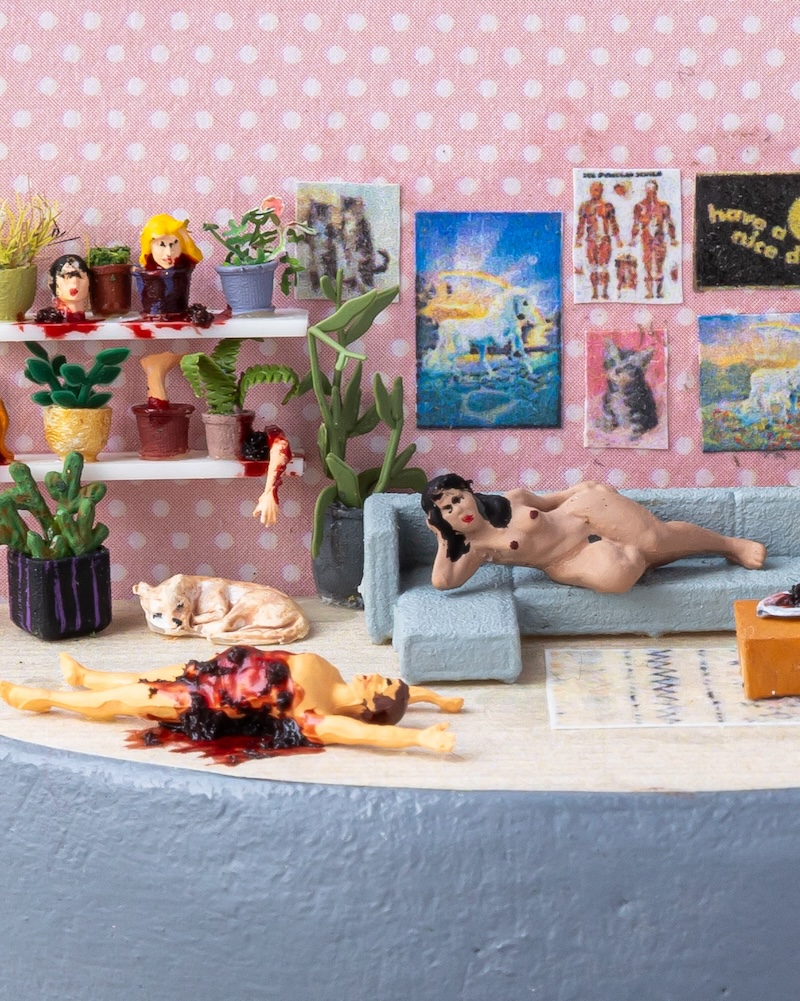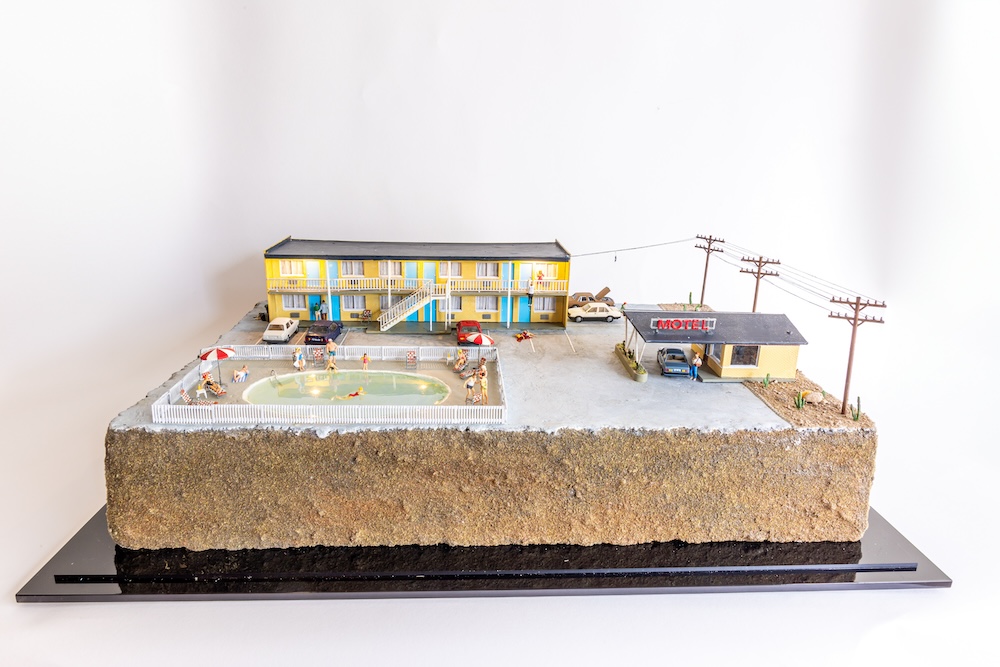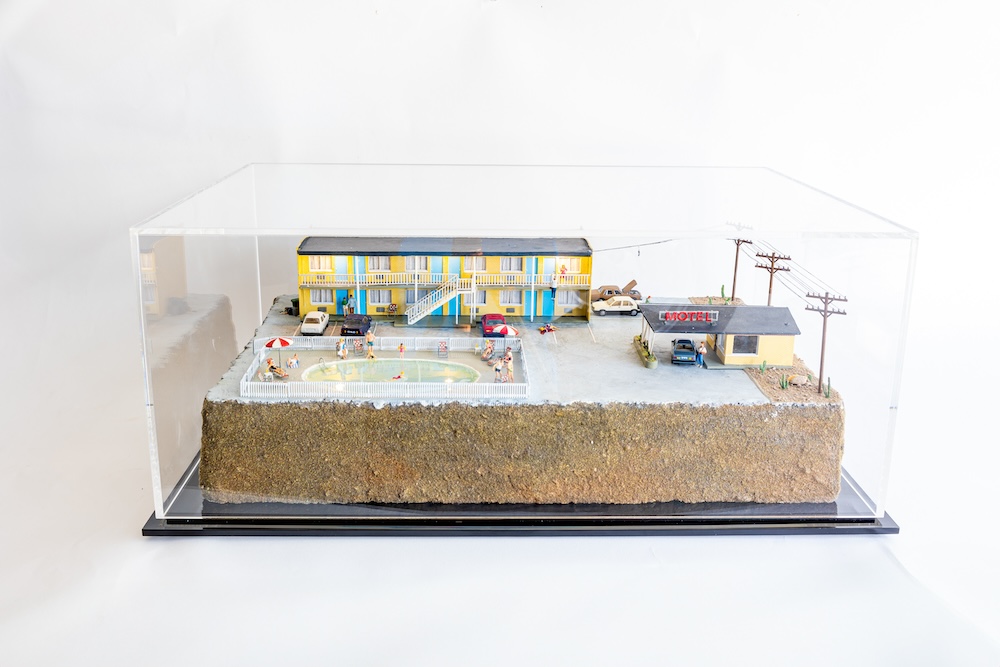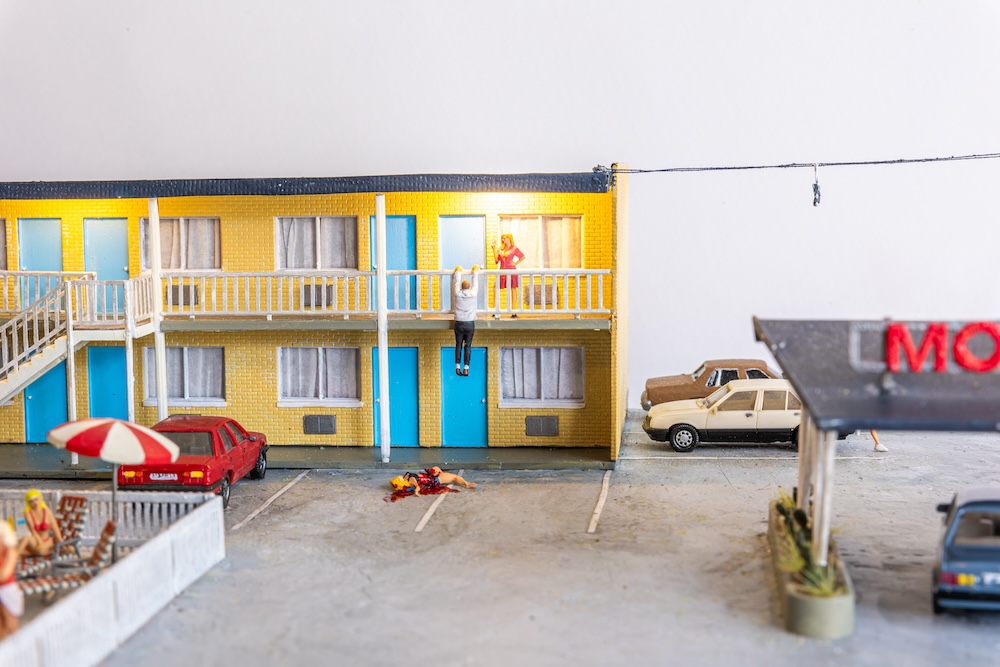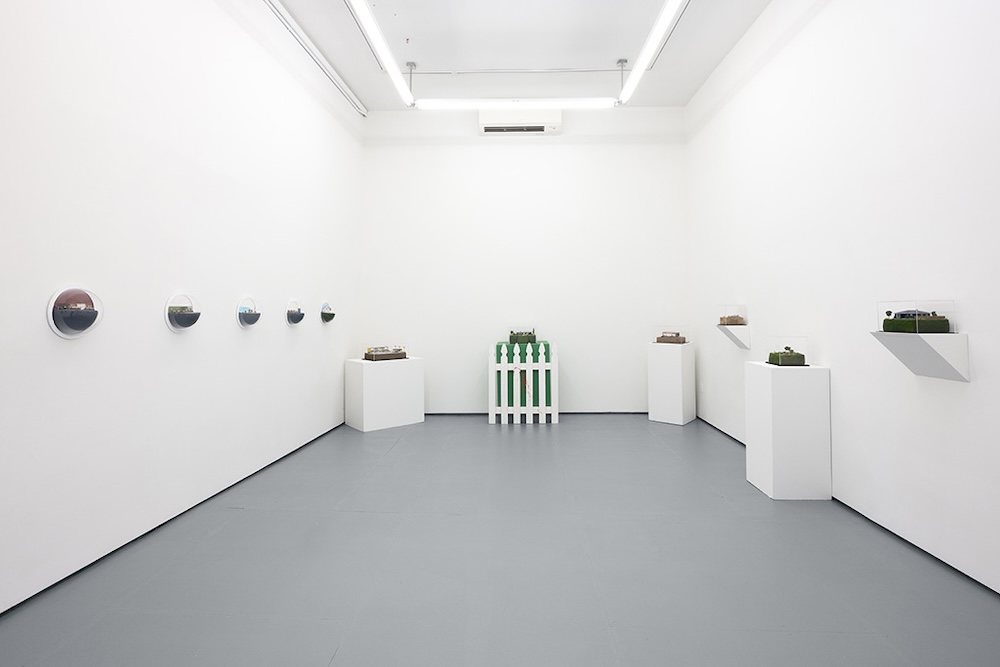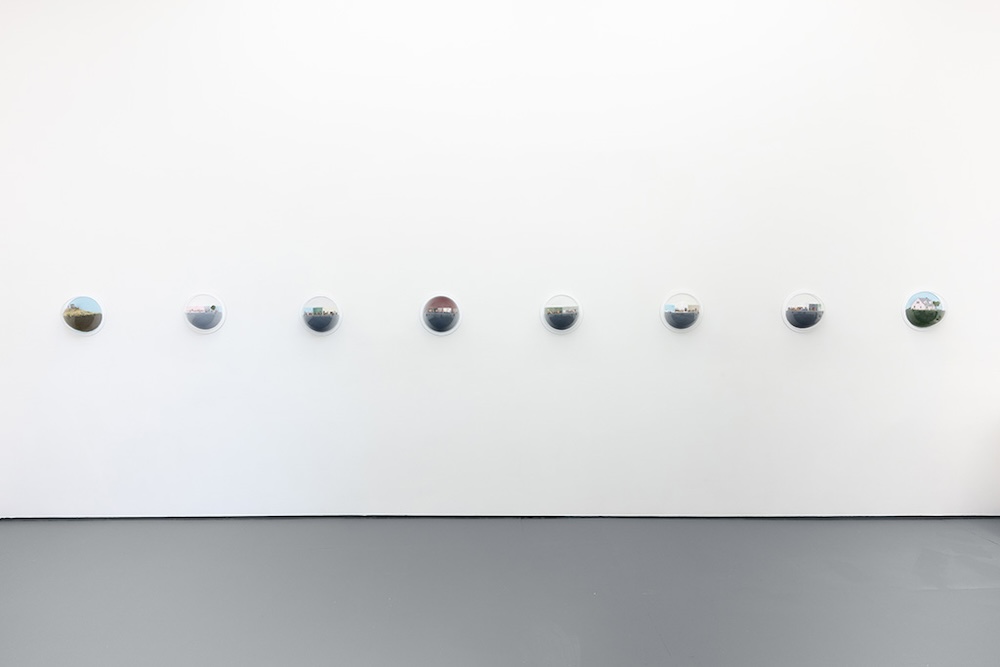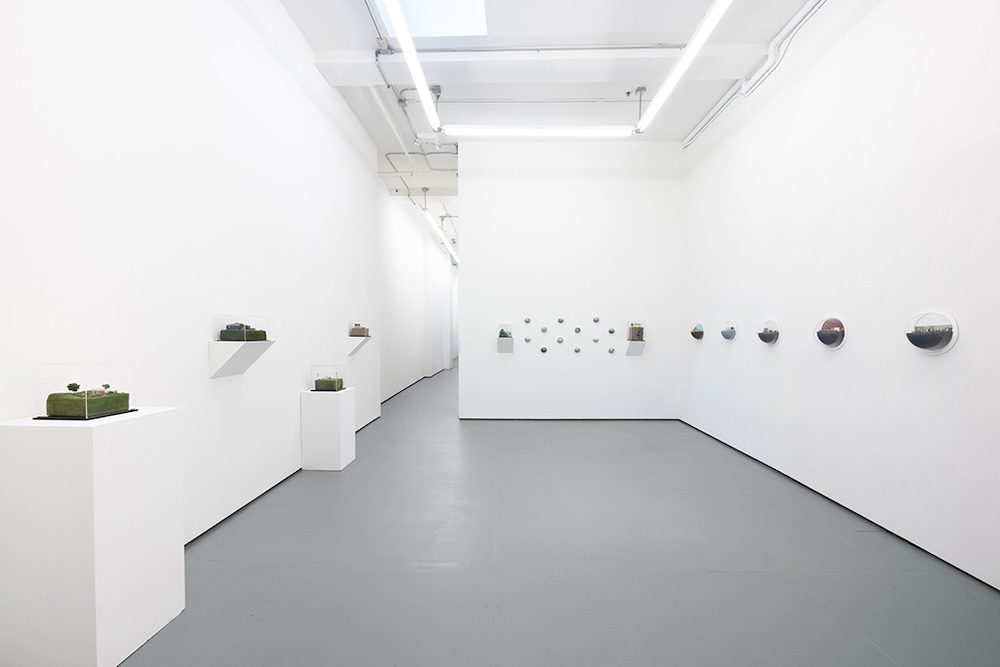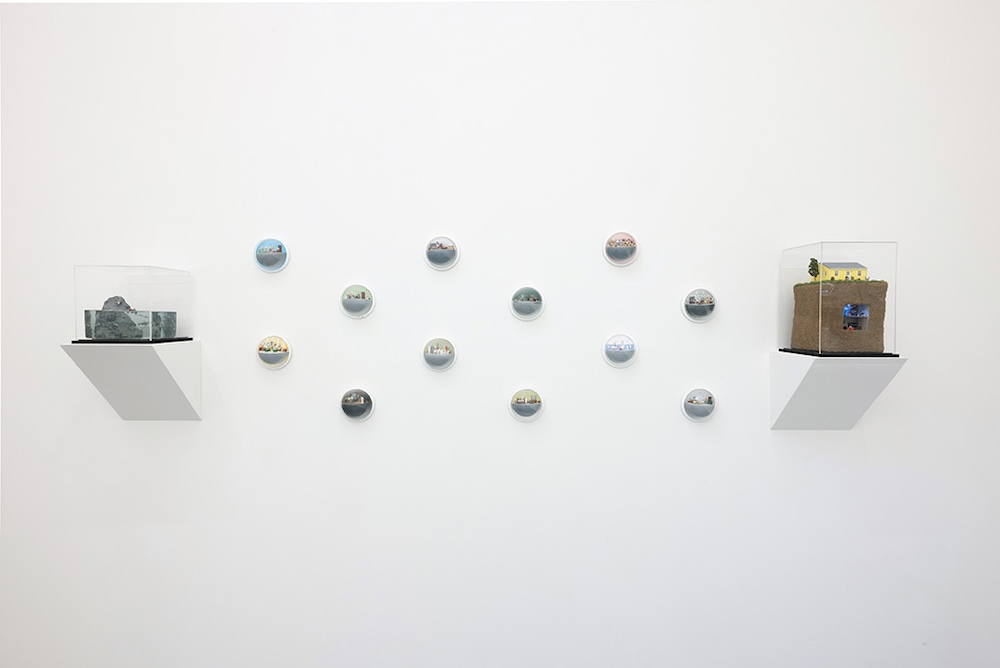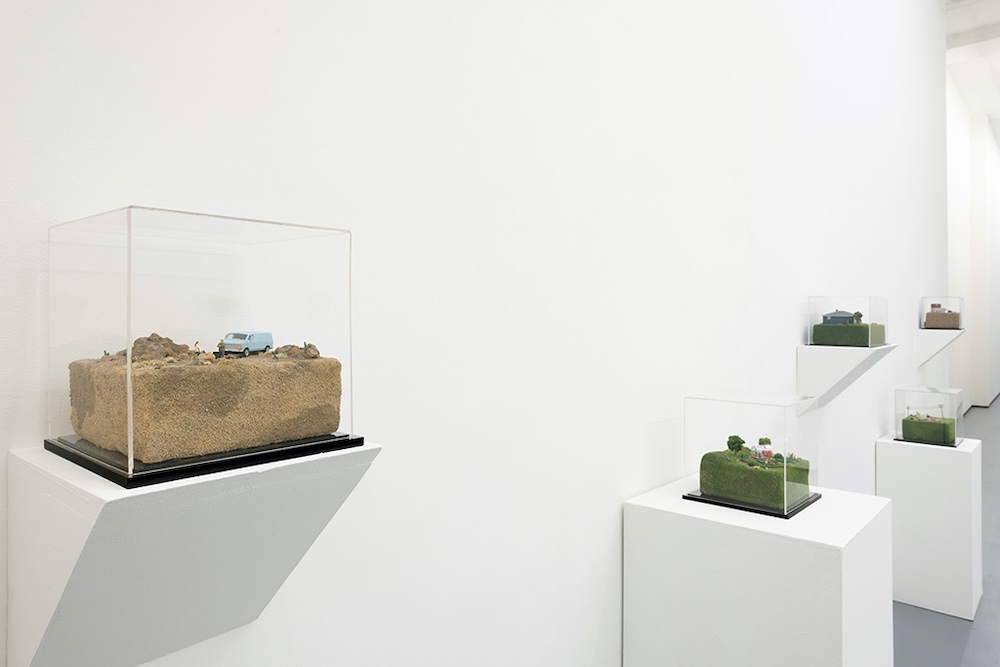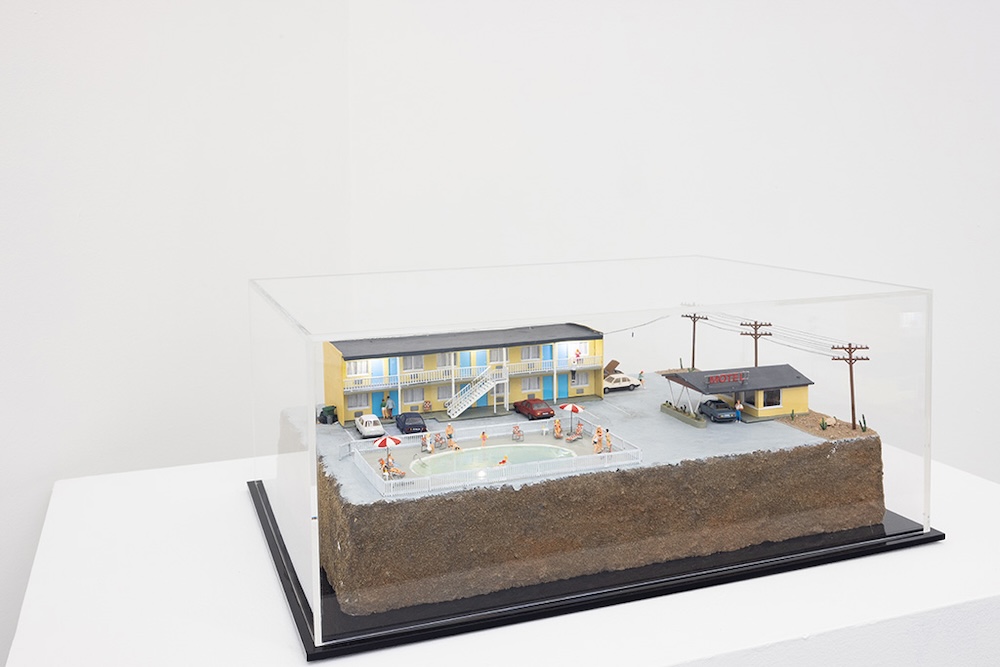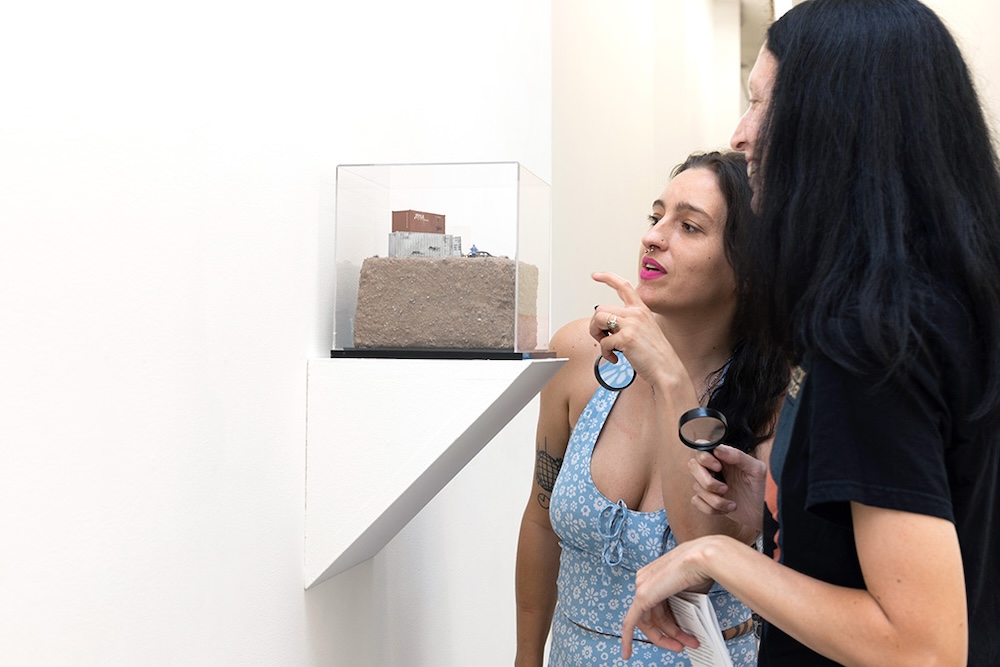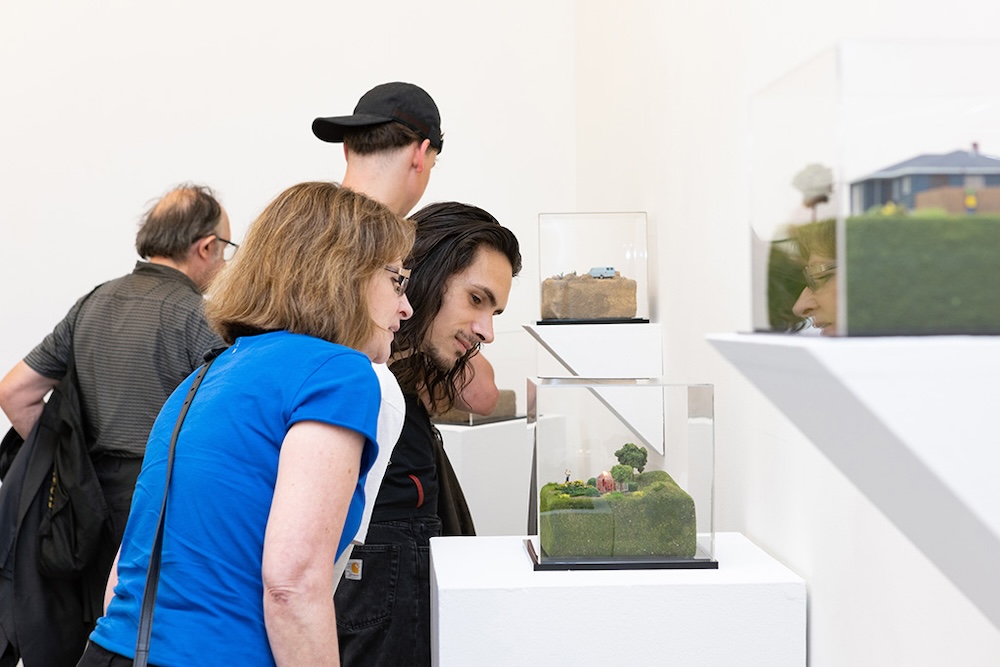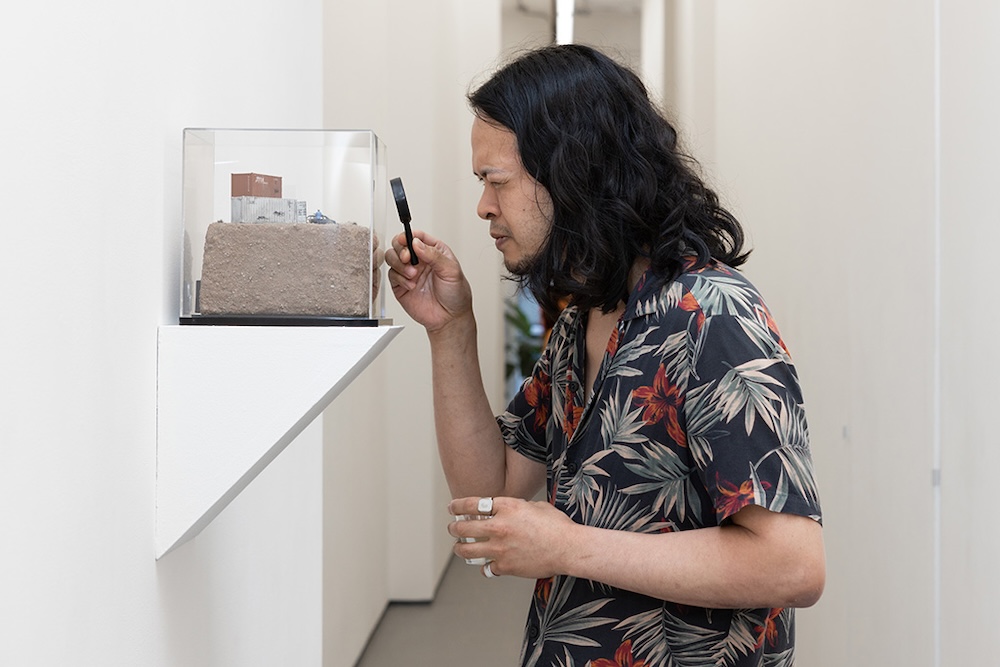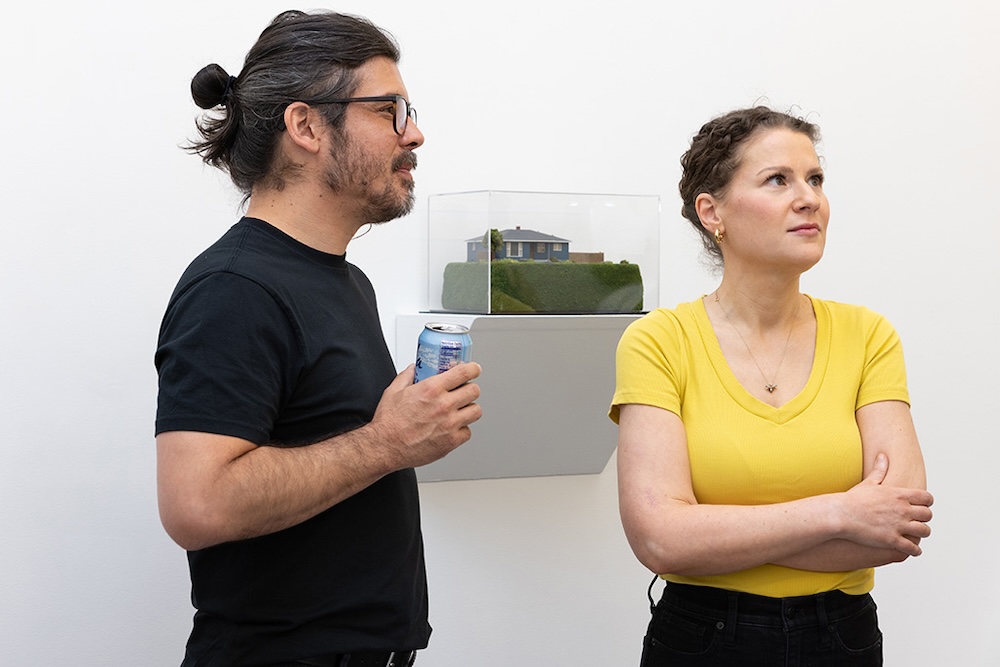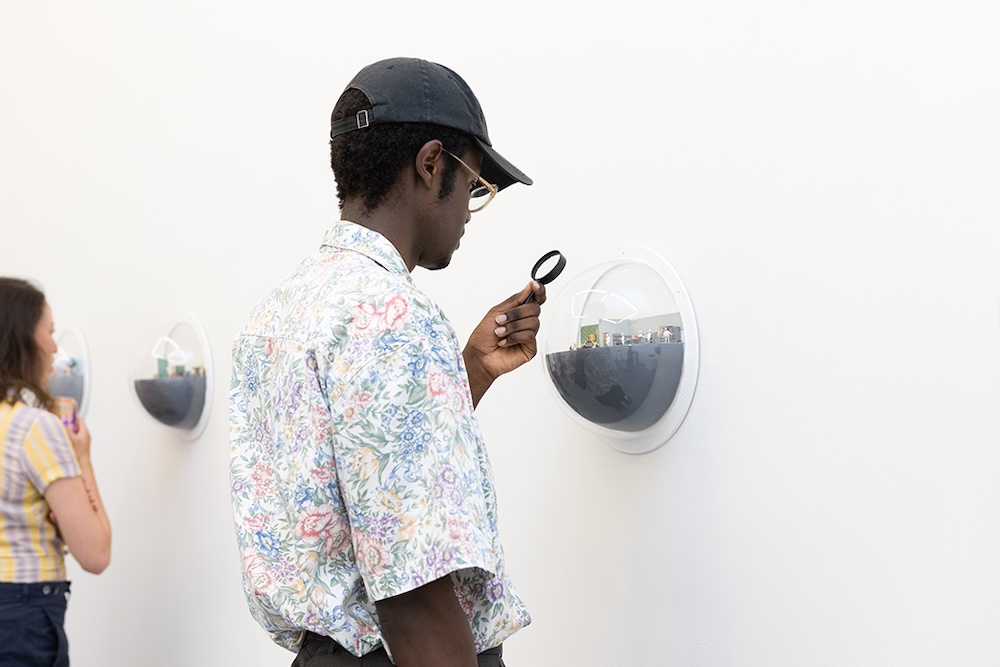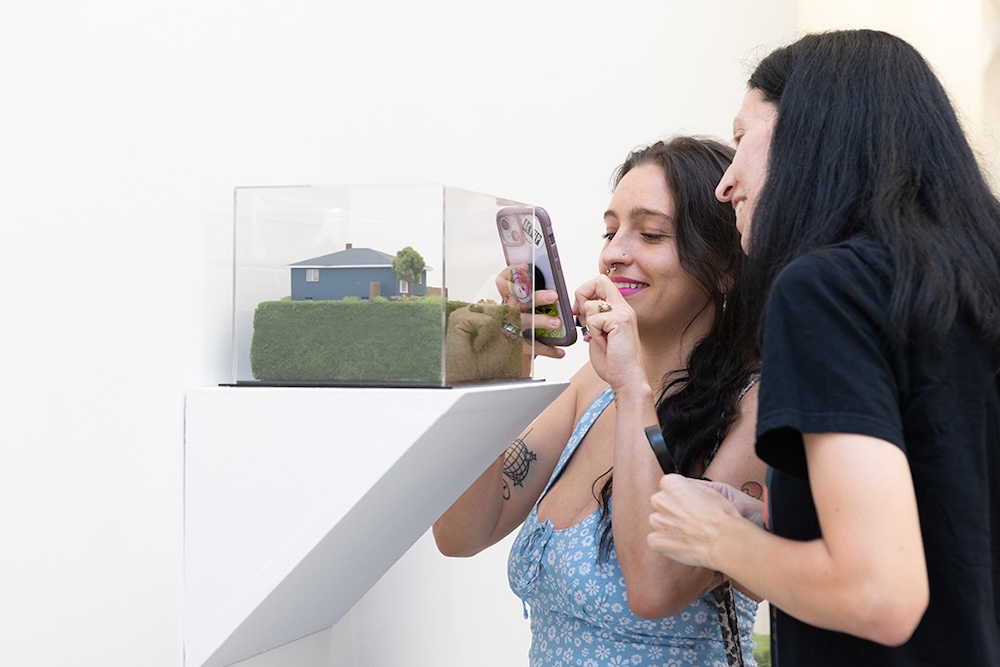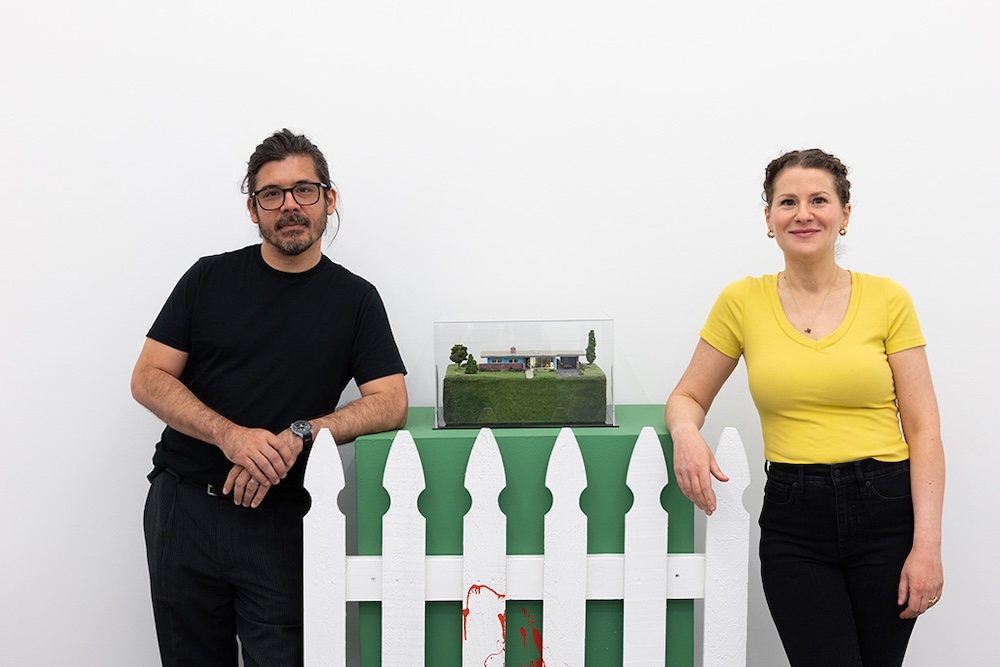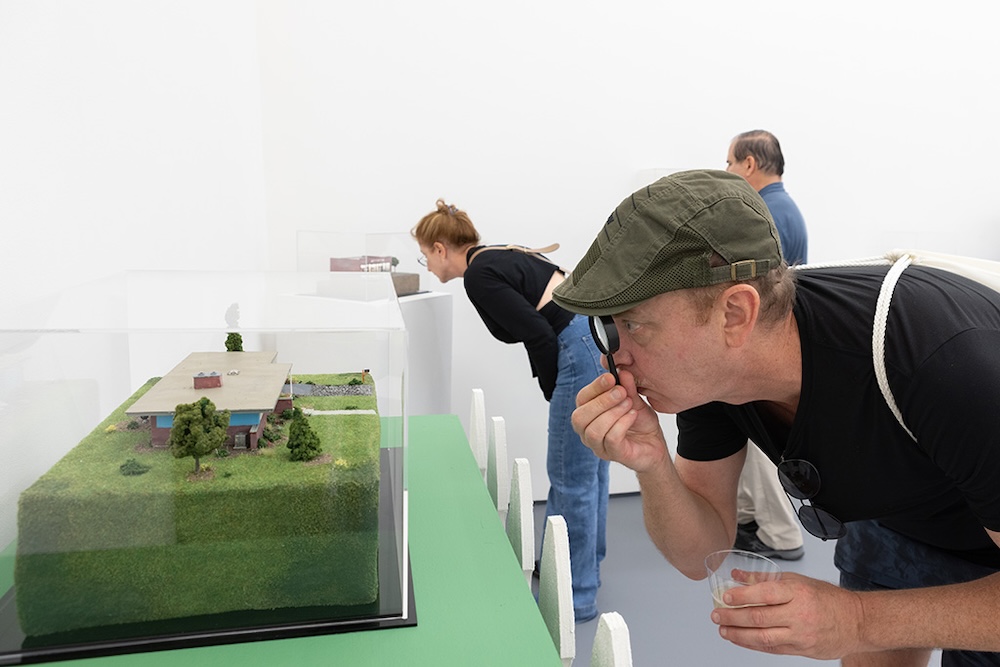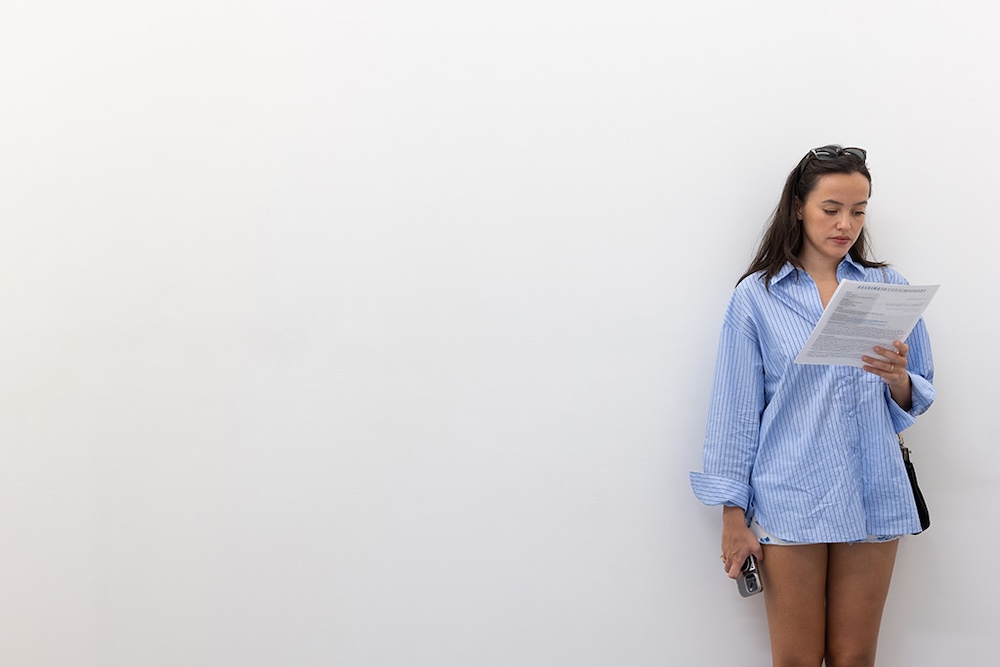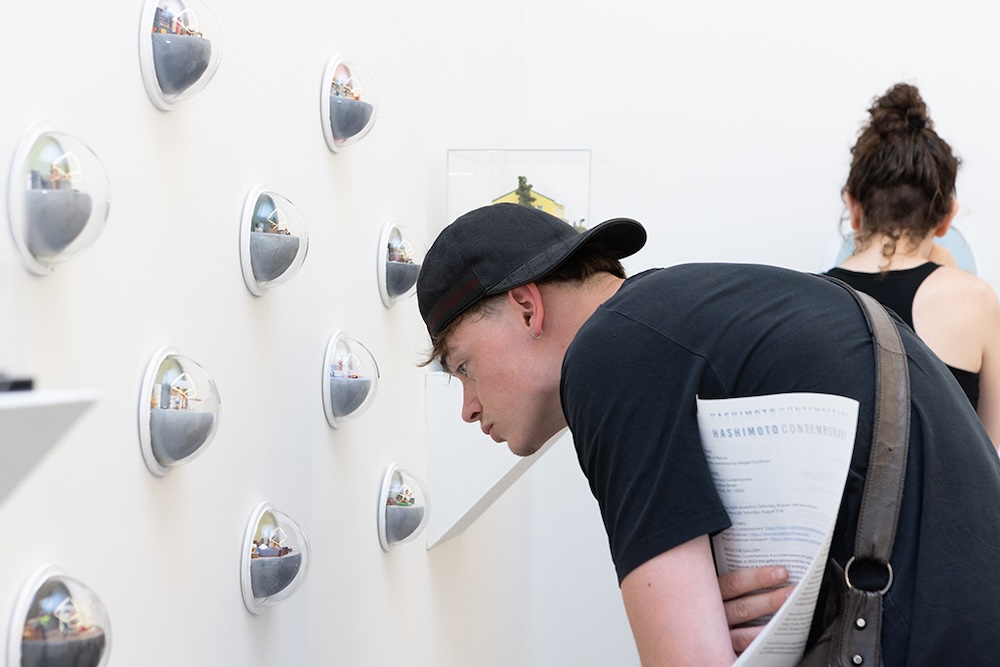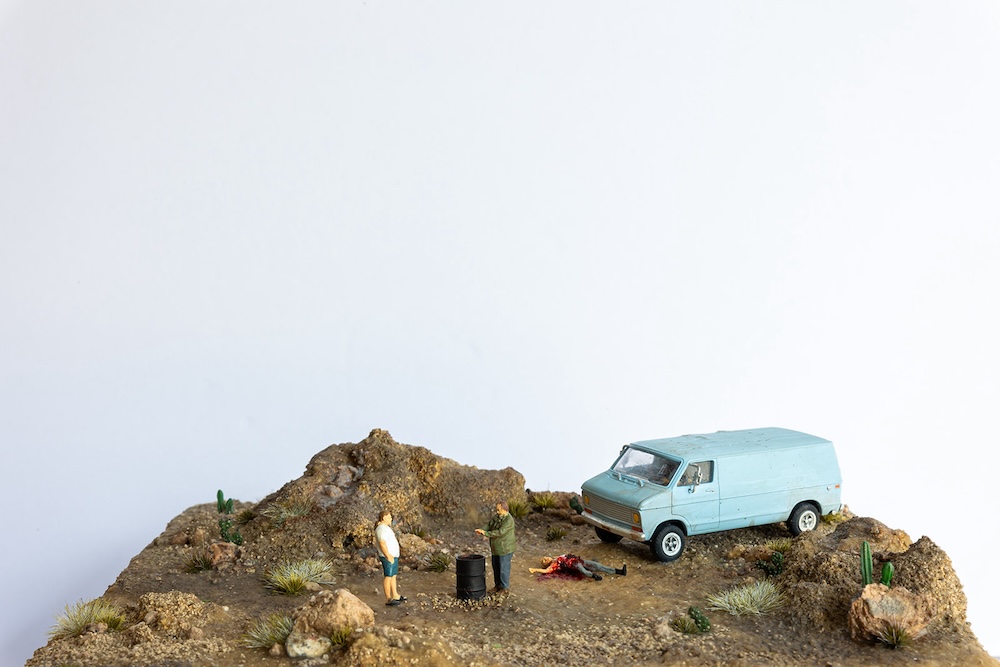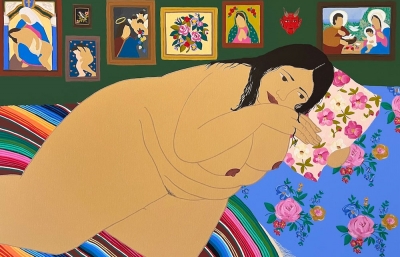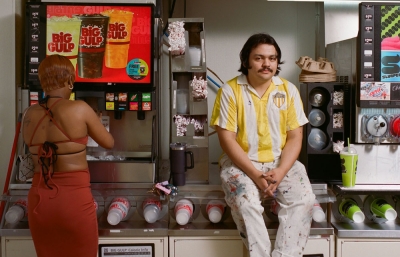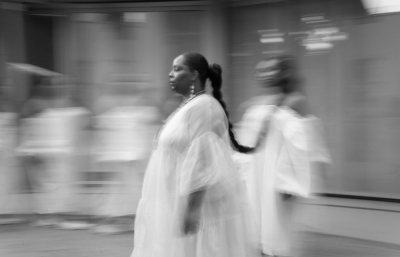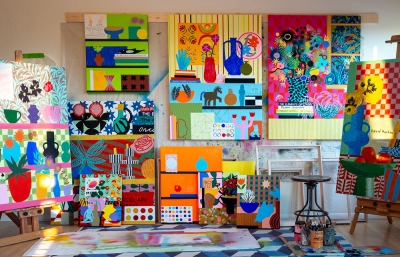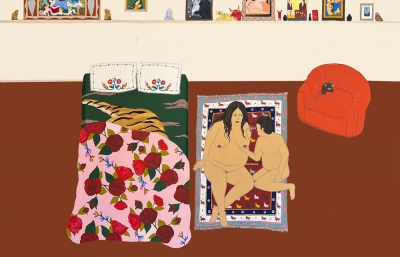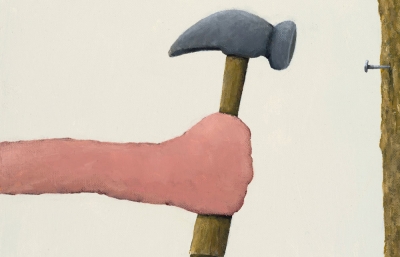It might seem pessimistic to view humans in their natural state as violent, self-servingIt might seem pessimistic to view humans in their natural state as violent, self-servingcreatures, just waiting for the right moment to execute their nastiest desires. It’s a belief the17th-century English philosopher Thomas Hobbes popularized, and also one 21st-centuryWashington-based artist Abigail Goldman begrudgingly believes. Since the early 2010s,Goldman has created “dioramas,” where tiny gruesome scenes of murders, cannibalism, andother gory violence play out in otherwise unsuspecting neighborhoods. Goldman’s macabrescenes are not intended to shock but to present complex and seemingly absurd narratives ofhuman compulsions that bubble below the surface.
Before her latest solo exhibition State of Nature at Hashimoto Contemporary NYC, the artistBefore her latest solo exhibition State of Nature at Hashimoto Contemporary NYC, the artistcaught up with the gallery’s Katherine Hamilton to discuss how their now decade-long artpractice has changed, how they position themselves in the artworld, and if there’s anything theyfeel optimistic about in this already horrific world.
Katherine Hamilton: You’ve spoken extensively about how your artwork highlights an undercurrent of anger seething under the surface of American life. While you’re speaking from an American perspective, it feels like this anger, this blood boiling, has proliferated across the globe: many people are so unsatisfied with the lives they live and the conditions they were given, they could break at any moment. Do you feel like your depictions of life and violence have changed as politics have shifted globally?
Abigail Goldman: I’ve been making dieoramas for more than a decade now. My work hasn’t changed much in that time, but it does exist in a different world from where I began. Rage and anger are increasingly the human condition, irrespective of your address. Something boils under the surface everywhere, for everyone, every day. Eruptions hardly alter the landscape.
Strangely, I think this makes my work feel almost quainter and cuter. The scenes of suburban mayhem that I make are practically picturesque compared to what’s happening out there. It’s an inverse relationship: The bleaker our full-scale world feels, the more darling my miniature worlds look in comparison. The more we acclimate to this pounding state of chaos, the less tiny scenes of human butchery strike me as lurid or alarming. I can’t compete with the everyday awful.

The title of the exhibition is State of Nature, referring to 17th century philosopher ThomasThe title of the exhibition is State of Nature, referring to 17th century philosopher ThomasHobbes’s notion that in our natural state, humans are inherently violent. Over centuries ofdiscussion, Hobbes’s view has been framed as rather pessimistic. Considering yourlong-term inquiries into human violence, what interested you about this centuries-oldtheory?
I find cold comfort in a centuries-old theory that aligns with my worldview today—it’s aI find cold comfort in a centuries-old theory that aligns with my worldview today—it’s aperverse validation of my belief about who we are at the core. It is rather pessimistic, but alsopragmatic.
I thought it was really interesting that you would frame your work under this theory,I thought it was really interesting that you would frame your work under this theory,because Hobbes also believes all societies should be governed by authoritarian forces, astructure he believed offered the most consistency. Your work also touches on the factthat, especially in America, our governments have given us permission to act on violenturges. I’m wondering how you view power relating to violence in your works?
Hobbes and I agree about the state of nature being “nasty, brutish and short.” We part ways when it comes to ideas of authoritarian governance being a necessary check against our core instinct. In America, we’ve seen authoritarian leadership absolutely seduce people eager to release the darkest Id. It’s chaos masquerading as order, and I fear there’s more to come.
That being said, there are governing forces at work. We’re generally polite. We stand in line. We signal to turn. We mostly follow the rules. But we’re fraying at the edges and a certain kind of madness is setting in. If people find any truth in my work, perhaps it’s seeing subterranean feelings suddenly come to surface.
Your works are also funny—I’m thinking of the scene where an elderly woman dressed like the Queen of England holds a machine gun after massacring a man in a suit. I know it’s generally pedantic to break down a joke, but do you think this humor comes from the elements of surprise? Of irony?
It’s hard to say. Humor is complex, and what makes you laugh is a function of personality. There’s something funny about the unexpected—the killer queen holding a semi-auto is jarring, so we laugh from the slight shock of it. The killer queen is also ridiculous, so we laugh at the preposterousness. And the killer queen is—for some, at least—satisfying or gratifying or cathartic. So we laugh from a place of recognition or release. There’s nothing like getting something you didn’t know you needed, like a vision of the corgi-flanked queen mowing down her houseguests.
There’s so much story-telling in these artworks. Do you know what the narrative of a finished scene will be when you begin? Or does thinking of a normal place first—like grandma’s living room or a yoga studio—lead to the wicked things that might take place there?
I do keep a running list of ideas. Sometimes I know from the outset what I’m going to make. Other times, I have an idea that veers off course in construction and becomes something new in the making. Sometimes I have absolutely no ideas and I just stare blankly in my workspace, panicking. But eventually, the ideas come back.
Often, I start with the location and work backwards—build a yoga studio first then layer in the carnage later. Some settings just lend themselves to visions of violence.
You’ve been making these dieoramas for a while now—your first solo exhibition with us was in 2016, and you were making these pieces long before that. Both technically and conceptually, do you feel like you do anything differently now from when you first started?
Technically, my work is much more detailed than when I started. In the beginning, I primarily made exterior scenes—people being killed in their lawns or outside their houses. Now I spend most of my time making interior scenes, which allow me to get more meticulous, for better or for worse. A decade of squinting and painting with single-hair brushes hasn’t done much for my eyes. Conceptually, I focus more on trying to create complex tension or layered stories. This is also a function of becoming more detailed—intricate scenes tell intricate stories, if I’m successful.

You often highlight that the figures are rendered in 1:87 scale, no larger than a penny. Is there a specific reason you chose this ratio to life? Do you ever think about exploring a different ratio—even smaller, or maybe gargantuan?
A lot of my work can quite literally fit in the palm of your hand. When people see dieoramas in person, they’re often surprised by the scale. They’re accustomed to seeing online images without context for dimension. My work is small. Really, really small. For this reason, I do take pains to discuss the size. Occasionally I’ll place a coin or pushpin inside a scene as a gauge for proportion. Behind the scenes, I’m working under bright lights with the occasional magnifying lens.
I began working in 1:87 scale for personal and practical reasons. Personally, I like the mix of adorable and violent. Practically, it’s a very common scale for people building model railroads, so the supplies were readily available.
I would love to make a dieorama in dollhouse scale, which is typically 1:12. There’s such a vast amount of readymade dollhouse accessories, and it would be a nice change to have so many options for fine details that are actually visible to the naked eye.
I’m wondering if you could say more about your personal relationship to artmaking. You were a huge hit at the Outsider Art Fair! People really connect with your work and feel like you’re speaking a truth that many of us are afraid to utter or acknowledge in any way. This is often what artists do. I wonder if you ever feel like an outsider to the artworld, even though you have a very impressive art CV!
I’m entirely an outsider in the art world. I meet the technical definition—I’m self-taught without any formal training. And, if there’s a perception that outsider artists are weirdos working late into the night, mumbling to themselves in messy studios, well, I’ve got that too. Over a year ago I converted my closet to my workspace. Where there were once shirts on hangers and shoes on racks, there’s now spilled paint, a tremendous collection of dull razor blades and tweezers, gallons of bulk-purchase glue, tiny slivers of fake grass floating everywhere, and so on. My August show at Hashimoto Contemporary was entirely born from that closet; the more work I made, the more the walls closed in on me. At the end, it was hard to turn around without knocking something over. It’s my private slice of madness.
What are you optimistic about right now?
Very little. But I do find the ongoing support of my work deeply heartening, so I’ll trudge ahead and hope my pessimism is proven wrong.
Abigail Goldman’s solo exhibition State of Nature is on view at Hashimoto Contemporary NYC through August 31st. Opening night and installation photos were taken by Heather Quercio.


